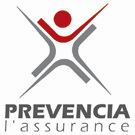Tinted car windows (vitres teintées) are becoming more and more popular – both as an after-sales option and as a manufacturer’s option for new vehicles. What we see in the movies, we now see on our roads and streets. This growing popularity can be explained by four reasons:
- to increase the privacy of the car’s occupants,
- to reduce glare and dazzle,
- to help reduce cabin heat
- and to add an additional layer of (film) protection against shattering glass in case of accidents.
So what’s not to like about tinted car windows?
There are two possible reasons. The first is difficult to pin down because it – again – comes from the movies. Not seeing who’s inside a vehicle, especially in that big black ‘sedan’, can – for some people – create a sense of suspicion. More logically, there’s a valid question of road safety. Maybe the driver’s view of the road is compromised by dark windows? Equally, how can we be sure that the driver behind those tinted windows in the car at the crossroads has properly seen us? These are subjective measures and there are as yet no statistics to help us.
So what does French law say about tinted car windows?
In January 2017, the French code de la route was modified to state that a car’s front windscreen and two front windows must have a tint that reduces transparency by no more than 30%. (Drivers with specific eye illnesses are excluded, but will need to carry an appropriate medical certificate.) There are no restrictions on the degree of tint applied to rear windscreens and rear passenger windows. (The term tinted windows in this article therefore refers to the front windscreen and the two front side windows.)
The penalty for non-compliance is a 3 point deduction from your license, and a fine of €135.
Roadside contrôles and the contrôle technique
Roadside gendarme contrôles aren’t equipped with the means to test a car window’s transparency characteristics so at the moment this law’s day-to-day application is based on the naked eye, not an objective measure. However, garages and contrôle test centres do have such equipment and it is on their list of (currently) 133 points to check. Non-compliance with this 70% transparency level can indeed result in the need for une contre visite.
Selling a car with tinted windows
Additionally, because a vehicle is required to have a valid CT with a minimum of 6 months validity when it is sold, it will be difficult to sell a vehicle with a tinted windscreen and tinted front windows (where the tint reduces light transmission by more than 30%). Theoretically, one would therefore either need to remove the tinted film prior to a sale or – if the tints were in the glass itself – sell the vehicle to a driver with a registered eye condition.
The UK has similar regulations, although front windscreens need to let in 75% of the available light, and front side windows the same 70% as required in France.
Links
- Décret 2016-448, article R316-3-1 provides the detail.
- Tinted vehicle regulations in the UK.
The information provided here is for general guidance. The exact details of your policy will define your legal and contractual obligations. What is written there will take precedence over what is written here.
Ces informations sont données à titre indicatif. Pour connaître précisément vos obligations légales ou contractuelles en relation avec votre contrat d’assurance, veuillez vous référer aux conditions générales et particulières de votre contrat.

